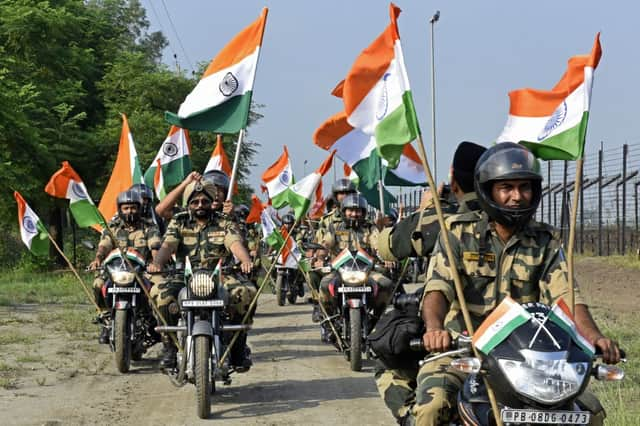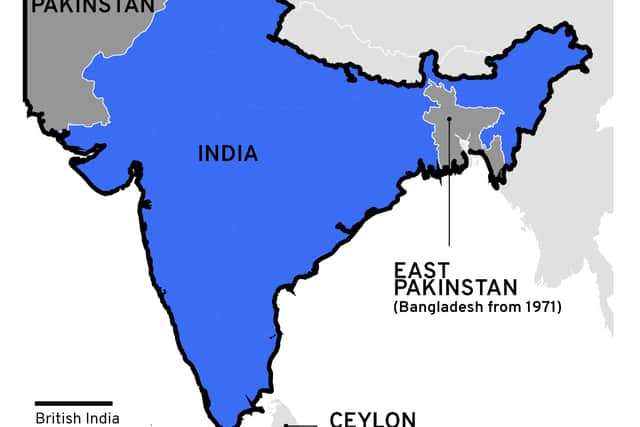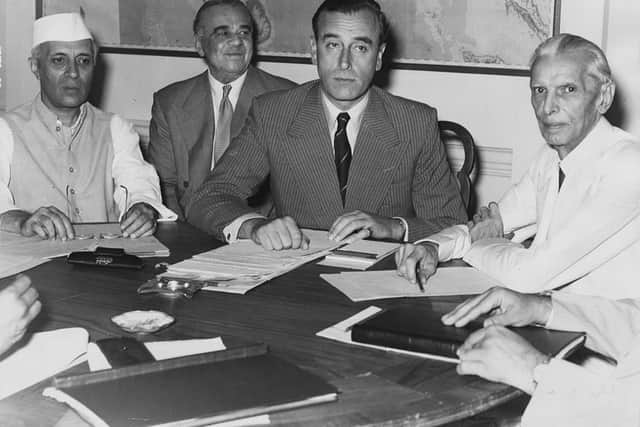India partition: why was country divided into India and Pakistan on Independence Day - and rivalry explained


Today (15 August) marks the 75th anniversary of the Partition of India, a historic event for the country which saw it break from years of British colonial rule.
But what exactly happened, and how can you find out more on the subject?
Here is everything you need to know about it.
What was the partition of India?


Advertisement
Hide AdAdvertisement
Hide AdIn 1947, India consisted of the modern-day states of India, Pakistan and Bangladesh.
This territory was mostly under the political control of the UK until August 1947, a legacy of the British Empire, which had ruled the region for nearly 200 years.
As part of the British Raj, the Queen was the head of state.
With resentment of colonial rule growing in India, plans were devised to divide India into two separate states that would be independent of both the UK and each other.
Advertisement
Hide AdAdvertisement
Hide AdThese countries were India and Pakistan, and the two self-governing independent states were legally established on 15 August 1947 at midnight.
Pakistan was divided into two parts: west Pakistan and east Pakistan, the latter of which gained its own independence in 1971 to become Bangladesh.
Why did it spark violence?


Due to religious tensions between Hindus and Muslims in India, its overseers drew the new territories roughly along historic religious lines.
India had a larger Hindu population, whereas Pakistan was mostly Muslim, and the division split he two provinces, Bengal and Punjab, based on district-wide non-Muslim or Muslim majorities.
Advertisement
Hide AdAdvertisement
Hide AdHowever, because the lines that divided the countries did not precisely correspond to where these religious populations were located, millions of refugees fled to one state or the other.
There was also a lot of violence as religious groups who were left stranded in the ‘wrong’ territory were targeted by local populations.
The partition displaced between 10 and 20 million people, causing widespread humanitarian crises in the newly formed territories, and is frequently referred to as one of the world's largest refugee crises.
There was widespread violence, with estimates of the number of people killed accompanying or preceding the disputed partition ranging from several hundred thousand to two million.
Advertisement
Hide AdAdvertisement
Hide AdThe after effects of partition can still be felt today, and the violence created an atmosphere of hostility and suspicion between India and Pakistan that continues to affect their relationship.
Thw two countries continue to have poor diplomatic relations, and are at odds over the region of Kashmir, which both the governments in Islamabad and New Delhi claim to control.
Where can I find out more?
The partition has been a popular theme in film, and more films on the subject, including several mainstream ones, have been made since the late 1990s.
Independence and partition are also significant events in the screenplays of the biographical films Gandhi (1982), Jinnah (1998), Sardar (1993), and Bhaag Milkha Bhaag (2013).
Advertisement
Hide AdAdvertisement
Hide Ad‘Demons of the Punjab’, a 2018 episode of Doctor Who, depicts the events of partition through the eyes of a family torn apart by religious differences, and the recent Disney+ show Ms. Marvel depicts a historical fiction version of the partition from the perspective of a Muslim family fleeing to Pakistan.
India 1947: Partition in Colour details the events leading up to India and Pakistan’s official declarations of independence from the UK and each other.
The two-parter shows many of the events in colour for the first time in nearly 75 years.
Advertisement
Hide AdAdvertisement
Hide AdThe first episode focuses on Lord Mountbatten’s appointment as Viceroy of India in February 1947, while part two depicts India’s descent into violence and chaos. It is available to stream through Channel 4’s All4 on demand service.
Comment Guidelines
National World encourages reader discussion on our stories. User feedback, insights and back-and-forth exchanges add a rich layer of context to reporting. Please review our Community Guidelines before commenting.
